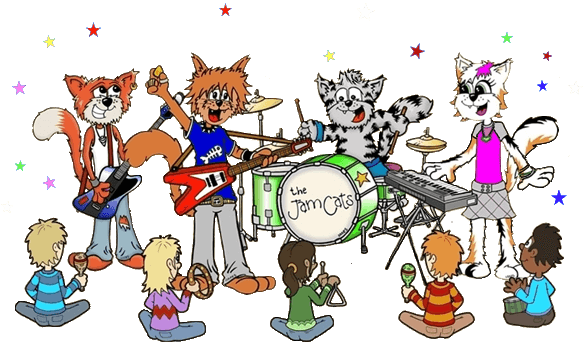
If we have learned nothing else in the (nearly) six months COVID has been known in the United States, we have learned that our children are resilient. However, it does not mean that they have not felt a wide range of emotions unlike anything they have experienced. As adults, we have as well, but our children do not have the experience and coping mechanisms that we do.
Yes, they have been resilient, but there is no doubt this time away from school, away from most friends, and away from most family has been challenging for a young child who cannot fully understand what is happening in the world. As school starts, be it virtual, hybrid, or in-person, our population experiences plenty of similar fears. Children knowingly have difficulty with “big emotions,” and these sure are big.
Music can be an integral part of social-emotional learning for a number of reasons. Here are some ways you can use music to help our children regulate their emotions during the upcoming school year.
Active Listening
Active listening differs from passive listening. During active listening, you and your child are listening with intent. After the piece, ask your child age-appropriate questions that require listening. “What instruments did you hear? Was the song fast or slow? Can you sing any of it back to me?”
You can also help a child identify feelings through a piece. “How do you feel during this song? What makes you feel that?” For older children, you can ask them to infer what the composer was feeling and why. Active listening activities change every day. Listening to the same piece of music every day for a week will expose unique nuances and can evoke new emotions each time.
The practice of active listening promotes discipline to sit and listen to music. It also lets student take the opportunity to take ownership over how they are feeling.
Calming Music
Opposite of active listening, identify songs that will calm your child during study time. Alpha-wave music can be a great tool, but certainly not the only genre that will work. (For some science reading for yourself, check out this study that discusses changes in the bio-electrical brainwave activity that occur while listening to music).
Calming music is also a great tool to have in a back-pocket during a meltdown. Using calming music in a specific “cool down” area can help a child ground themselves while feeling emotions they are unable to regulate their emotions on their own.
Games
There are plenty of games that children love that encourage social-emotional learning! These games build confidence, increase impulse control, and help a child resist distractions
Freeze Dance
Freeze Dance is a clear example of impulse-control practice. It’s SO HARD to stop dancing, but that’s the rules! The more practice in play, the more it becomes routine. As a bonus, allow your child to choose the songs you use! Giving the opportunity to make and own an authentic choice will help build confidence.
Nursey Rhymes
Using old and known pieces is a great way to increase confidence and reduce anxiety. Learning something new can be frightening to a child so performing songs and dances that they know with certainty can reduce anxiety in activities moving forward.
Performing
Performing in any way (singing, dancing, or playing an instrument) will help a child build confidence and self-awareness. It takes a great deal of vulnerability to perform and when a child can practice overcoming these vulnerabilities and anxieties through music, it will be easier to do so in other real-life situations.
Music as a transition
Choose a song your child already knows and loves (or even allow them to choose, power of authentic choice!) and use it as a transition piece between activities. The expectation is that by the end of the song, you will begin the next activity. This encourages discipline, as the child knows when the song will end. It also sets attainable expectations for your child. When the child knows exactly when the next activity begins, there is no anxiety in the unknown.
Cultural Music
When children hear and perform cultural music, they understand that they are part of a collective. In awakening social awareness, students also discover and embrace the many cultures and traditions in the world around us.
There are several songs readily available to discuss emotions, how to identify, and how they may make a child feel. I, personally, enjoy this Storybots episode, “Emotions.” The songs are catchy and it does a great job engaging kids in learning about emotion.
Here are some other great resources for music in Social-Emotional Learning
https://www.childrensinstitute.net/about-us/blog/using-music-support-sel
https://www.cce.org/thought-leadership/blog/post/sel-during-covid19




